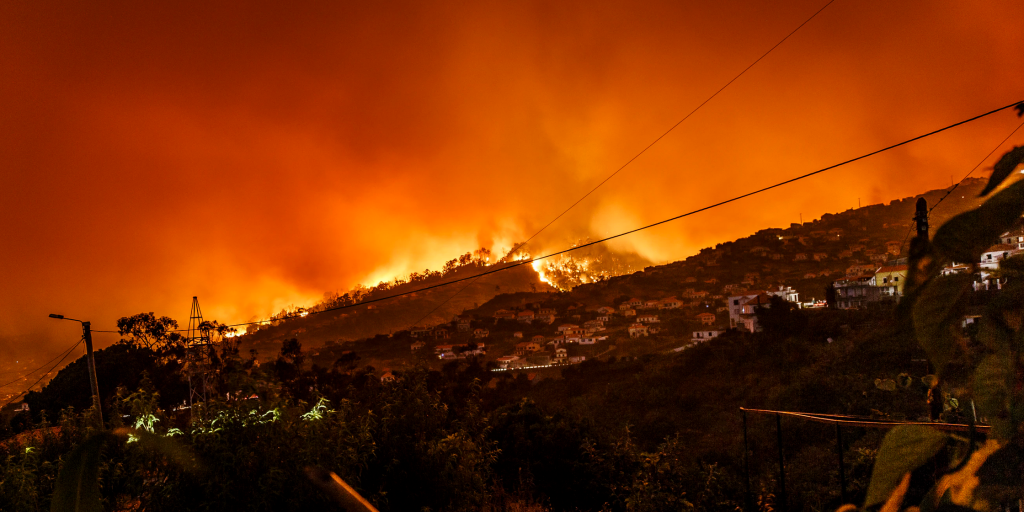New system provides wastewater treatment solution for FEMA workforce housing in Paradise, Calif.
The November 2018 Paradise, California Camp Fire in the Sierra Nevada foothills devastated the entire community, killing 85 people, destroying 11,000 homes, and displacing nearly 50,000 people. It was the most destructive wildfire in the history of California.
After the fire was subdued, it left a devastated community. This disaster required an immediate response from the Federal Emergency Management Agency (FEMA) including manpower and equipment to quickly stabilize the situation, clear debris including toxic waste, and rebuild the community. To facilitate this massive recovery effort, the creation of a nearby workforce housing camp for up to 1,500 workers was necessary. The former Tuscan Ridge Golf Club property was selected for the base camp facilities, which consist of approximately 400 temporary, modular housing units, two food preparation kitchens, a dining facility, a fitness and recreation center, and a full-service laundry. To proceed with the base camp construction, a wastewater treatment system design with the capacity to handle a design flow of up to 100,000 gallons per day (GPD) was needed.
Project Challenges
Accelerated deadlines and extreme site limitations complicated the Tuscan Ridge Base Camp and wastewater system construction. The wastewater design flow was calculated at 50 GPD for each of the potential 1,500 workers for a total of 75,000 GPD. To accommodate peak flows and a factor of safety, the wastewater system design was sized for flows up to 100,000 GPD. Site geologic conditions were challenging. Underlying shallow lava formations precluded subsurface dispersal and impeded the installation process. Trenching through the solid rock at the site required specialized construction equipment.
Time was in short supply as modular worker housing was being constructed quickly. To expedite the construction timeline, a General Order Permit was issued to speed regulatory approvals for the wastewater system. Due to the challenging characteristics of the site, large wastewater flows, and short timeframe for completion, the project contractor, Lance Bates of NexGen Septics, selected an Advanced Enviro-Septic (AES) Wastewater Treatment System. The AES system features gravity collection and distribution, passive secondary treatment, ultraviolet (UV) disinfection, and large evapotranspiration basins for post treatment dispersal and possible reuse. The AES technology removes 99 percent of wastewater contaminants and requires a minimal amount of ongoing maintenance.
Wastewater System Details
Wastewater is collected from the housing, laundry, and kitchen facilities including from the inline grease interceptors specified for the food preparation areas. The wastewater flows by gravity to primary treatment in four Xerxes 40,000-gallon septic tanks that are plumbed in serial configuration for a total capacity of 160,000 gallons. Following the septic tanks, the wastewater discharges by gravity to a series of distribution boxes (d-boxes). The primary d-box splits the wastewater flow to four, lined, Advanced Enviro-Septic (AES) beds, which perform passive, secondary treatment. Each bed has a design flow capacity of 25,000 GPD and contains 8,400 feet of AES pipe surrounded by a specified sand. The entire system, including the four identical beds, totals 33,600 feet of AES pipe. The treated effluent is collected from the bottom of each bed and is distributed by gravity to four Salcor 3G UV disinfection units. There is a total of 16 UV units and each four-unit array disinfects 25,000 GPD. The purified effluent is distributed by gravity to one of four pump tanks. The effluent path through the bed, UV units, and pump chamber is segregated to allow isolation of the flows for any maintenance such as UV lamp replacement, etc. Lastly, each pump chamber distributes the purified effluent up to two evapotranspiration ponds.
Paradise Today
Before availability of the Tuscan Ridge Base Camp, FEMA recovery workers had to travel long distances to and from the area each day due to a lack of accommodations. This workforce camp is expected to continue as an active staging and housing area for the Camp Fire recovery efforts throughout Butte County for the foreseeable future.
The impact of the fire to the Town of Paradise is reflected in the population, which dropped from 26,800 in 2010 (United States Census, 2010), to approximately 2,000 residents in April 2019. This decrease in population enabled the State of California to certify the community as a rural area, which allowed the town to receive additional funding for housing, wastewater projects, and other needed rebuilding efforts. New building codes addressing flammable materials and improved street planning are being incorporated into the recovery plans to prevent similar devastation in the future.
While some residents have left the area without any plans to return, others are committed to rebuilding their homes utilizing fire resilient building practices; with many choosing concrete exteriors and incorporating additional safety features such as sprinkler systems. Businesses are beginning to reopen and there is widespread hope that the town and greater community will emerge from this disaster stronger, safer, with a more modern municipal infrastructure, and better able to meet the economic and environmental challenges of the future.
Don Prince holds a Civil Engineering Degree from Vermont Technical College and is a licensed septic system designer and evaluator. He has provided technical support for AES and other Presby Environmental products since 2012. Presby Environmental is an Infiltrator Water Technologies company. Don lives with his family in northern Vermont.
















